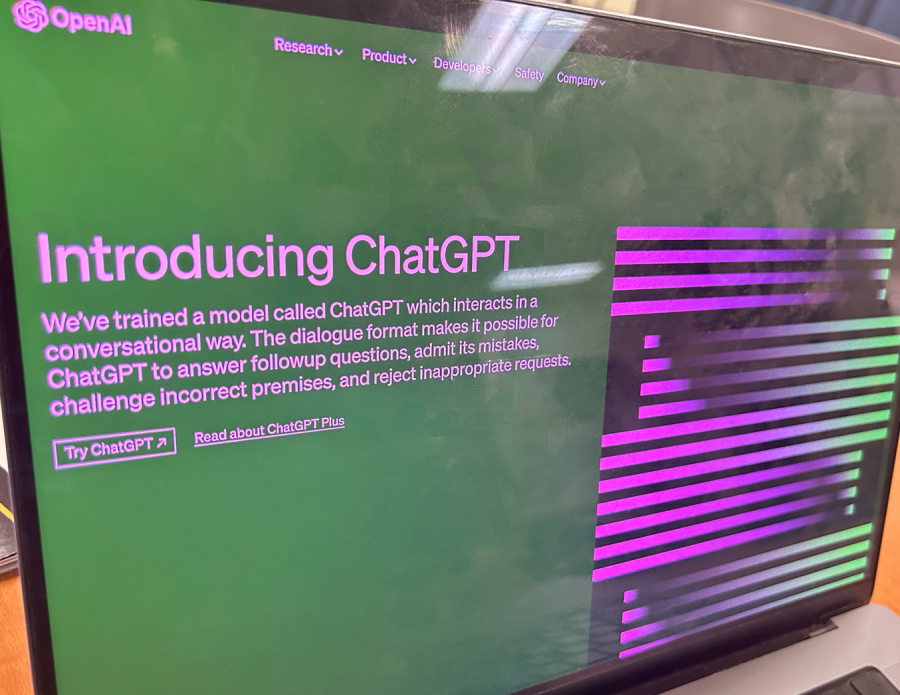Opinion: Adapting to AI: Embrace technology use in schools
Photo: Ashray Gupta
In a world where technology is advancing rapidly, it’s no surprise that artificial intelligence is making its way into the classroom. While these tools can be incredibly useful in helping students complete their work more efficiently, they also raise important questions about academic integrity.
Did you notice that the previous paragraph was written by an AI tool? And actually, so was that question.
One of the biggest concerns about AI-generated content is that it has now become almost indistinguishable from human work. ChatGPT can now synthesize words and essays in a way that avoids plagiarism — since all of its work truly is original, just generated by AI. While Turnitin or other existing plagiarism checkers show exactly where text was copied from, new AI detectors are only able to give a percent chance that the text was written by an AI. OpenAI, the creator of ChatGPT, released a detector with a 9% false positive rate but stated that “it should not be used as a primary decision-making tool.”
Instead of fighting a battle utilizing old techniques that will inevitably lose against a system that grows newer by the second, academic institutions need to adapt to using AI for beneficial uses that don’t compromise the learning and original thinking of students. I urge all teachers to explore or understand the technology before making decisions that could negatively impact the growth of students in this changing world.
The current academic dishonesty policy at Paly follows the basic pattern of due process in an academic setting where the accused is allowed to present evidence in their defense and respond to any evidence brought forward by the teacher.
It is incredibly difficult to prove that a piece of writing is your own, and — with tools that claim to detect generated writing — it could be very difficult to provide concrete evidence that you wrote something. These detectors hide the inner workings of the technology behind them, which unfortunately makes many people trust them.
I attempted to write a small piece in a similar writing style to what ChatGPT would generate and the detector immediately flagged my writing as 99.8% fake even though the writing was my own original work.
The burden of ensuring these powerful new technologies aren’t abused falls to the companies that create them. While OpenAI is working on “watermarking” its text to prevent it from being submitted as original work by controlling the patterns of the writing to be caught by a detector, students can simply paraphrase the watermarked words since the detection relies on the order of the specific words and punctuation. AI tools are advancing at a speed where it’s extremely difficult to control since they are objectively unlike anything students have used to cheat in the past.
As tools like this become more widespread, schools will have to adapt. Incorporating AI into education should not be viewed as a replacement for traditional teaching methods, but rather as a supplement.
AI is power, and it’s up to us to use it in a productive manner. The purpose of any academic institution is to teach students to be ready for later life. Students will have access to, and likely utilize, AI outside the classroom, so it should not be excluded completely from schools. An example of a productive use is using these tools to enhance learning or save time by not doing repetitive tasks. I can see a future where AI can be a huge factor in improving equity by providing services to less fortunate students that the more fortunate could get with private tutors and counselors.
I urge all teachers to understand the detector technology they are trusting to avoid the possibility of unknowingly framing students and subjecting them to the mercy of the academic dishonesty policy.



